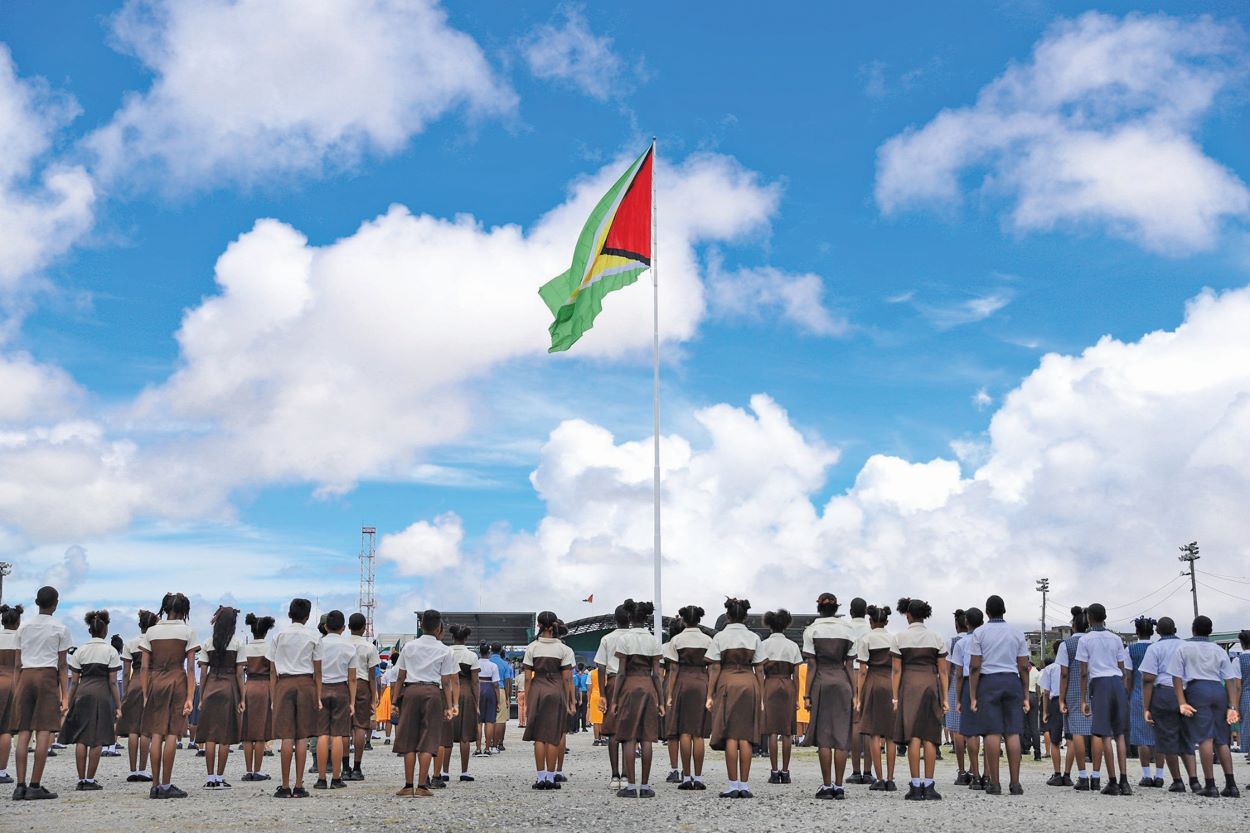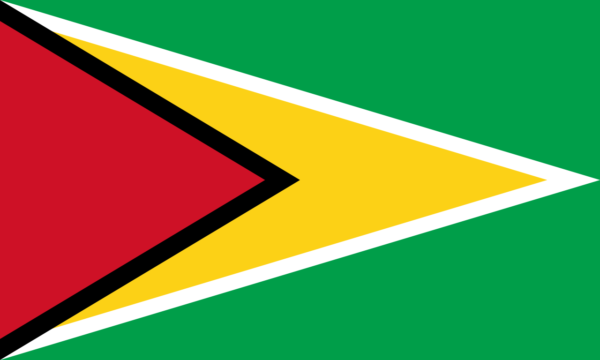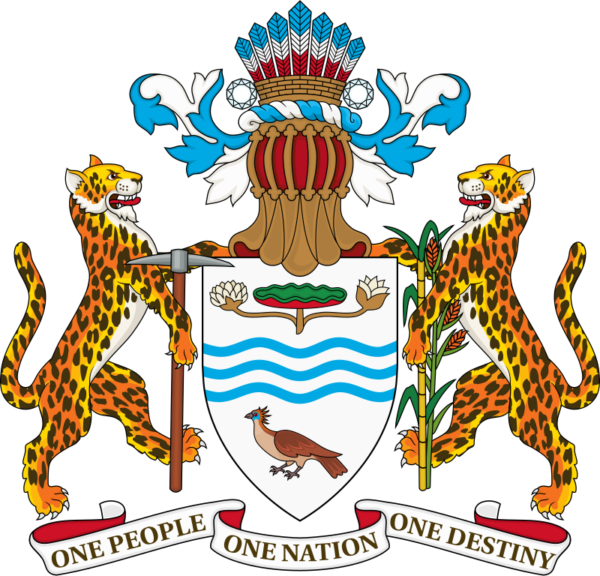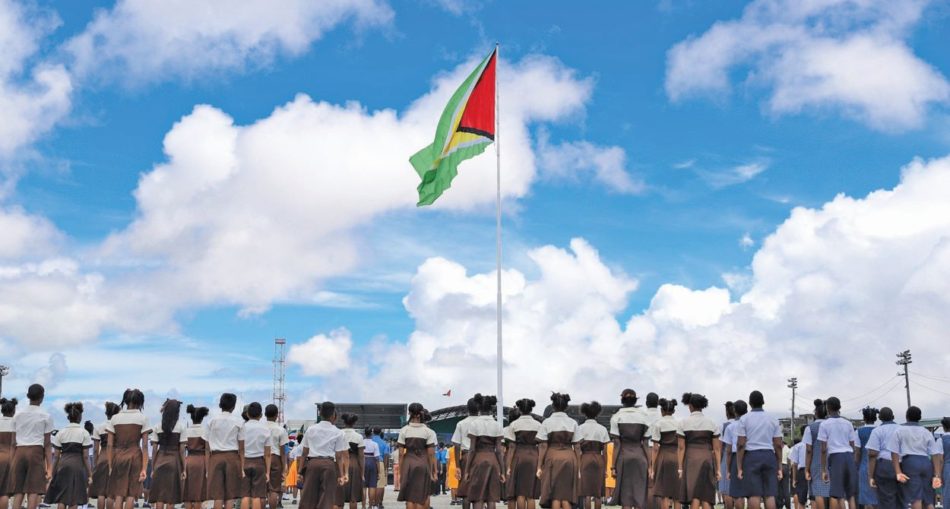The Cooperative Republic of Guyana celebrates Independence Day on 26th May every year. This holiday commemorates the anniversary of Guyana’s independence from the United Kingdom on the 26th May in 1966, after being ruled by the British for one hundred and fifty-two (152) years. Although the British were the last set of Europeans to govern Guyana, our culture is a mix of the diverse ethnic groups that came to Guyana. As a result, the celebration of Independence Day reflects our rich history and dynamic culture. Read on to learn the significance of Guyana’s Independence Day, its history and how it unites the people of Guyana.

The Flag Raising Ceremony of schools – Image Source: https://guyanatimesgy.com/youths-dominate-53rd-anniversary-flag-raising-ceremony/?fbclid=IwAR2cu6Vs9af_mNK2Iywthp5mjGz9eVxzoVguEKK3BCUDtCTfpwM45QHJT5c
Independence Day in Guyana
In Guyana, Independence Day is one of our most important national holidays because it represents the freedom of our Guyanese people and our strength as an independent nation. Prior to Independence Day, there is a flag-raising ceremony which promotes reverence and enhances our sense of pride and loyalty as Guyanese. However, the observance of Independence Day is usually a week-long celebration with the main focus on Guyana’s rich cultural ancestry. The first activities to usher in the celebration is a two-day Guyana Food, Arts and Music Festival. This event is held at the National Stadium in Providence with Guyanese music and dance, fashion shows, family activities, and creole foods. On the eve of Independence Day, the 25th May annually, the flag-raising ceremony is held at Durban Park. Following the flag-raising ceremony, the President addresses the nation a concert and performances and concludes with a firework display at 12:00 am to usher in Independence Day.
History of Guyana’s Independence
Before the Europeans discovered the wild expanse that is now Guyana, it was populated by nine indigenous tribes, called the Amerindians. The Dutch were the first Europeans to begin colonizing the land that is now known as Guyana. However, the Spanish made an effort to control the region, but the Peace of Munster, a treaty between the Netherlands made Spain formally concede to Dutch sovereignty.
In order to get more immigrants to their new colony, the Dutch officials ensnared the British with the prospect of securing new land. The British immigrants settled in a spherical area near the Demerara River. As the number of British citizens in the region increased, so did their influence on the colony’s internal operations. When France occupied the Netherlands during the Napoleonic Wars, the British used it as a defence to declare war on France and occupy the Dutch colonies like Guyana and other countries in the Caribbean.
In 1796, the British feigned control over the Dutch colonies in a bloodless takeover. The colonies were shortly reverted to the Netherlands at the commencement of its 19th century, but the Anglo-Dutch Treaty of 1814 returned them to the United Kingdom. In 1831, the colonies of Essequibo, Demerara and Berbice were formally united by the British as British Guiana.
In 1953, a constitution with a bicameral legislature and ministerial system, based on elections under universal adult suffrage, was introduced and under which elections were held. In 1957, the United Kingdom introduced elected members, the legislature voted for more representative government. The United Kingdom called a constitutional conference which was held in 1960 and provided for a new constitution with full internal self- government. In the elections held in August 1961 under this constitution, the People’s Progressive Party (PPP) again gained the majority. The United Kingdom had other constitutional conferences in 1962 and 1963, to settle terms for independence, but ethnic divisions prevented the leaders of Guyana’s three political parties from being able to reach consensus among themselves on the terms of a constitution; they then asked the United Kingdom to settle the matter.
The United Kingdom selected a form of proportional representation that was aimed at preventing domination by any single ethnic group. Despite renewed disturbances, elections were held under the Proportional Representative system and brought to power a coalition of the PNC led by Forbes Burnham and The United Force (TUF). The new government finalized independence arrangements at a further constitutional conference, which was boycotted by the PPP.
Guyana attained independence from the United Kingdom on May 26, 1966, and became a republic on February 23, 1970, remaining a member of the Commonwealth. The country was renamed to Guyana, which is an Amerindian word meaning ‘land of many waters’. In early 1966, the celebrations for Guyana’s independence commenced with a special committee being delegated to design the new Coat of Arms and the selection of the Canje Pheasant (or Hoatzin) as the National Bird.
Symbols of Independence
A symbol of independence represents the state of a nation that governs itself without the instructions from a parent country. In British Guiana’s readiness to transition from a colony to an independent nation, the creation of national symbols was needed. These symbols that would come to identify our people’s unique identity was a key part of this characteristically developmental impetus. Guyana received a number of national symbols during independence such as the Golden Arrowhead Flag, Coat of Arms, a National Motto, National Anthem, National Songs and National Flower, the Victoria Regia Lily. Guyana also received the Independence Arch from the Demerara Bauxite Company as a gift.
1. Flag of Guyana
Prior to Independence the British Flag-the Union Jack proudly flown overhead. However, on the 26th of May, this flag was replaced with the Golden Arrow Head, our very own the national flag. The layout and colours of the Golden Arrowhead were chosen by the People’s Progressive Party (PPP) through an international competition which was held from 1861 to 1964. Whitney Smith’s entry being the winning one.
The flag of Guyana was created with a golden arrowhead along with its middle to purport Guyana’s journey into the future. The golden arrowhead, with narrow white and black stripes along its sides, was sent on a green and red background, with narrow white and black stripes along its sides. Furthermore, the five colours were reflective of the country’s various assets:

National Flag of Guyana – Image Source: Public Domain, https://commons.wikimedia.org/w/index.php?curid=343600
- Green – The green represented agriculture and forests.
- Gold – Representsthe country’s mineral wealth.
- Red – For the zeal of nation-building.
- Black – Border depicting people’s endurance.
- White – Symbolizes the natural water potential of the country.
2. The National Anthem
As for the National Anthem, it was selected through a nation-wide competition, sponsored by the then National History and Arts Council. The winning entry was proffered by Reverend Archibald Luker, “Green Land of Guyana”, and the words were turned into music by a famous Guyanese education and musician, Cyril G. Potter.
3. National Independence Monument – The Independence Arch
We received a National Independence Monument, which is located on Brickdam, near Vlissengen Road, and was gifted by Demerara Bauxite Company (DEMBA). The monument, also known as the Independence Arch is made of three conduits made of aluminium, from Guyana’s bauxite mounted on a quartz base. The study of the arch was done by a Canadian engineer, Edric Klak.
In addition to the arch on Brickdam, Guyana also received a new arch to mark the country’s 50th Golden Jubilee and is located at Agricola, Greater Georgetown, which was a joint partnership between the Government of Guyana and Banks DIH.
The Coat-Of- Arms
The National Coat-of-Arms of Guyana is a composite of leitmotifs suggested in different designs by three Guyanese artists. The Coat of Arms was selected on the advice of the National History and Arts Council and approved by the College of Arms, England. It was accepted by House of Assembly on Friday, 25th February 1966.

Coat of Arms of Guyana – Image Source: https://en.wikipedia.org/wiki/Coat_of_arms_of_Guyana#/media/File:Coat_of_arms_of_Guyana.svg
- The Amerindian Head-dress – Signifies the Amerindians as the indigenous people of the country. The two diamonds at the side of the head-dress embody the country’s mining industry. The helmet is the monarchical insignia.
- The Two Jaguars holding a Pickaxe, a Sugarcane, and a Stalk of Rice – Symbolise labour and the two primary agricultural industries of the country – sugar, and rice. The shield, which is furnished with the National Flower, the Victoria Regia Lily, is to protect the nation.
- The Three Blue Wavy Lines – Exemplify the many watersways of Guyana. The Canje Pheasant, the National Bird, at the bottom of the shield depicts a rare bird found mostly in this part of the world and also the rich fauna of Guyana. The streamer below the shield bears the Nation’s Motto:
“ONE PEOPLE, ONE NATION, ONE DESTINY”.
The National Flower – The Victoria Regia Lily
The Victoria Regia, a water lily, was found by Robert Schomburgk, a German Botanist in 1837 while leading a voyage into the interior of what was then British Guiana.
National Bird – The Canje Pheasant or Hoatzin
The Canje Pheasant or Hoatzin at the bottom of the shield is our National Bird. It is a rare bird which is found principally in this part of the world. It is seen often on the Abary, Mahaica and Mahaicony rivers and especially in the Canje river area and on the banks of the Berbice River.
About Guyana’s Independence Day
The journey of Guyana’s independence began with the struggle against bondage, indentureship, and colonization. Guyana gained its independence from Great Britain in 1966 after their colonial rule. In respect of this, we celebrate Independence Day annually in Guyana. Guyana changed various colonizers and underwent lots of hardship but was able to emerge a stronger and independent nation. Every year marks another phase of development and progress for our beloved country.
Article Reference
- http://guyanachronicle.com/2016/05/14/our-first-independence-day
- https://anydayguide.com/calendar/2032
- https://en.wikipedia.org/wiki/History_of_Guyana
- http://guyanachronicle.com/2014/05/24/our-independence-arch







